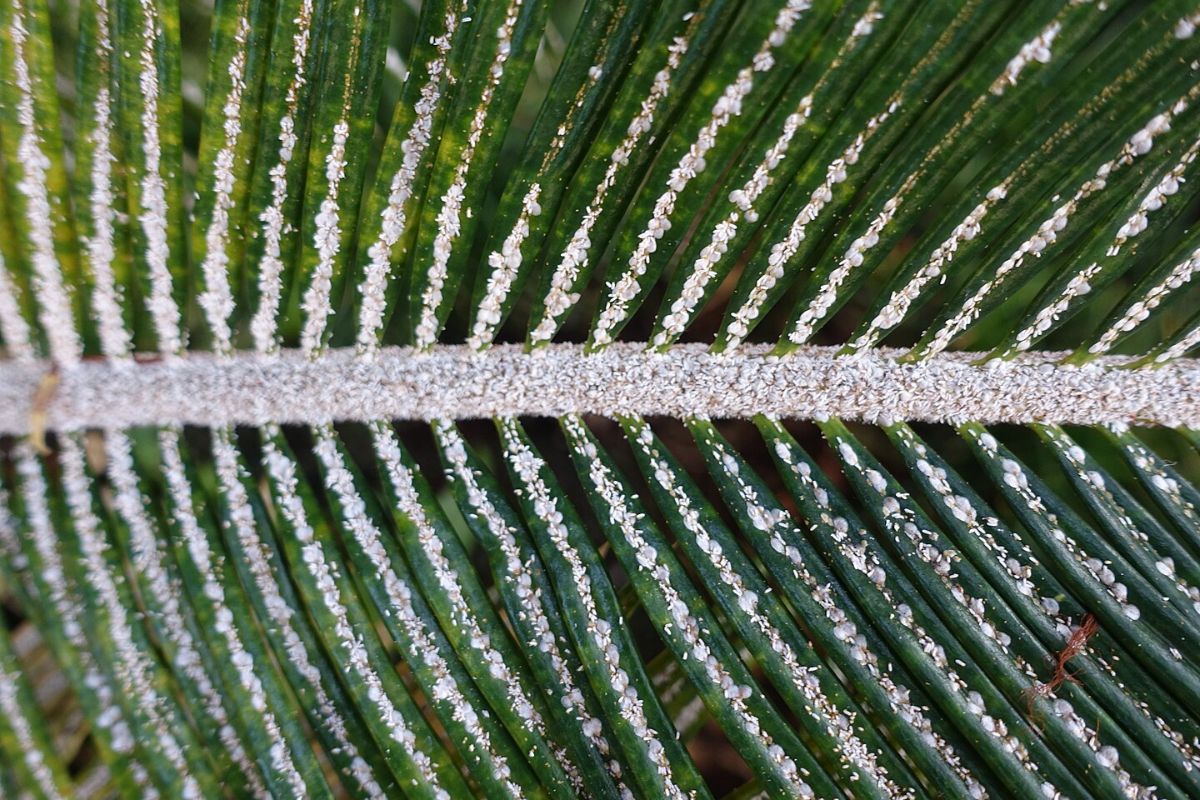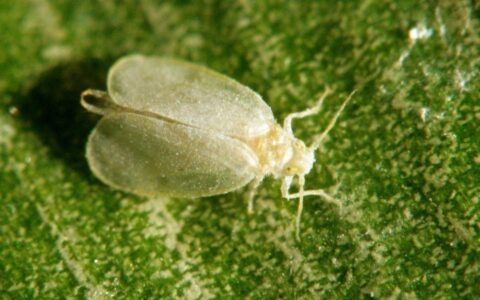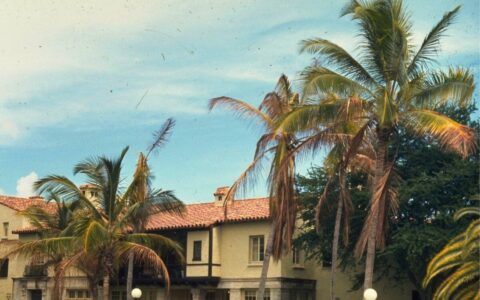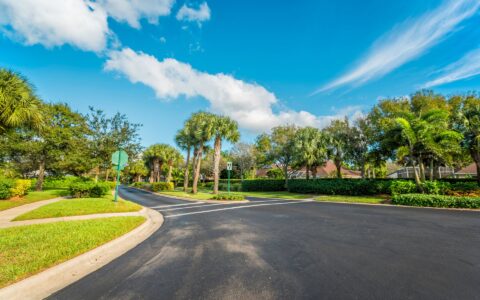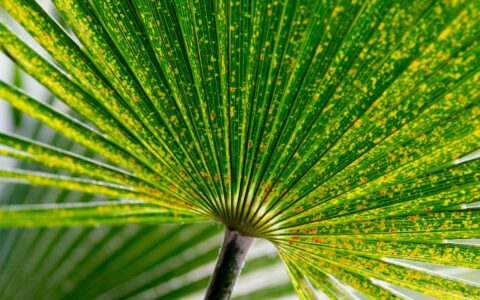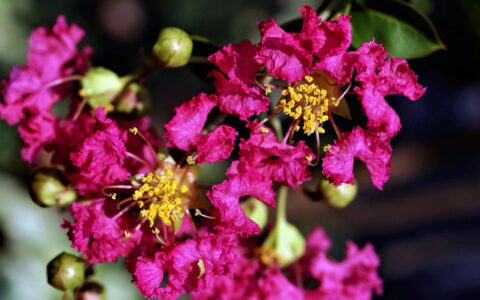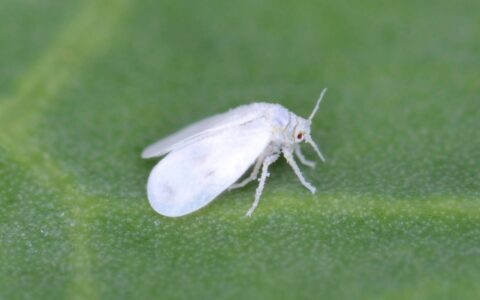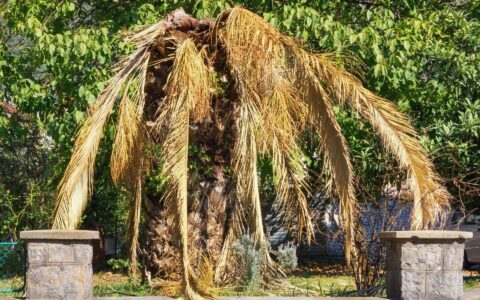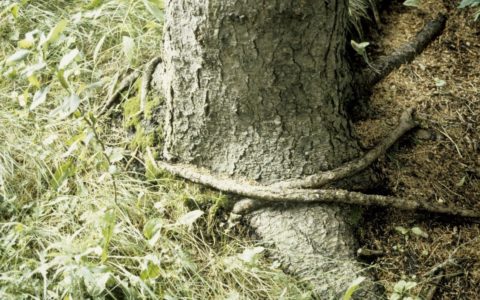Featured image of cycad aulacaspis scale courtesy of Florida Division of Plant Industry, Florida Department of Agriculture and Consumer Services, Bugwood.org
Sago palms are popular palms for South Florida properties, but a pest called the cycad aulacaspis scale has killed off many of the sago palms in our area.
In this article, we’ll cover how to spot if your sago palm is infested with cycad aulacaspis scale, how to treat it, and what you need to know about this palm pest.
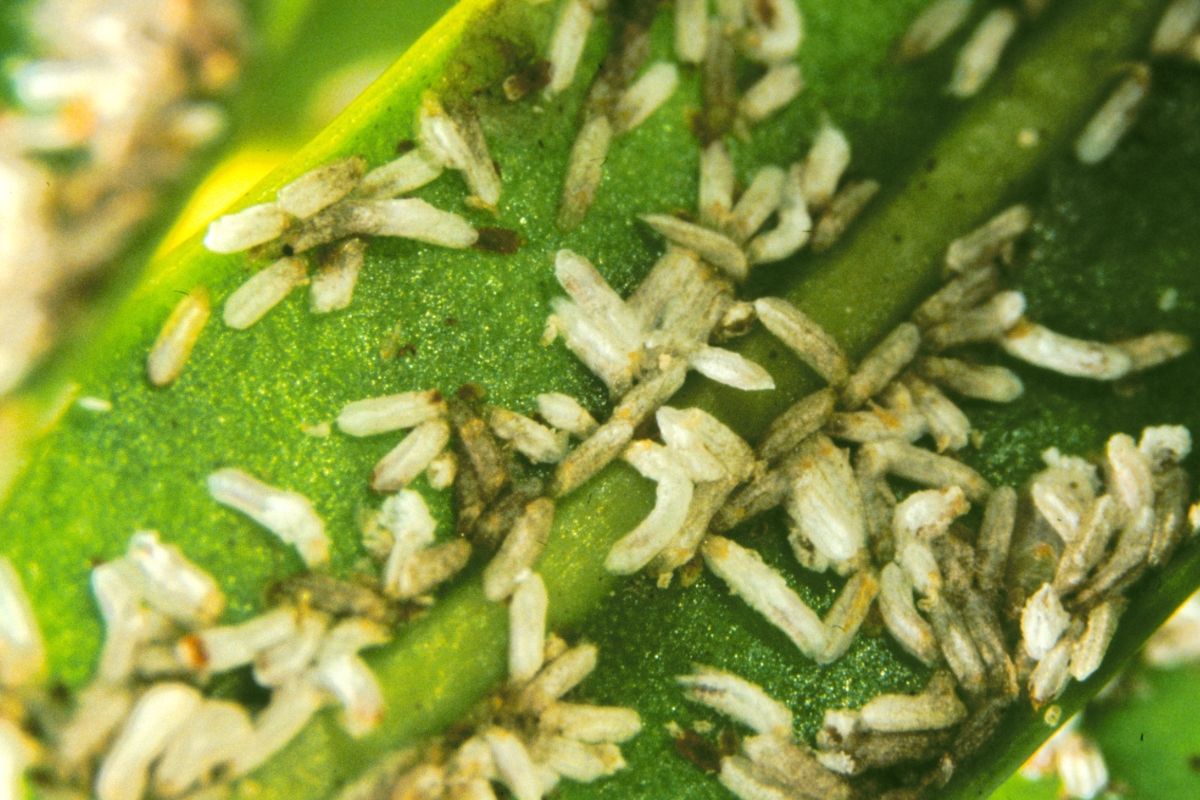
Closeup image of cycad aulacaspis scale on palm fronds in Florida. Image courtesy of Jeffrey W. Lotz, Florida Department of Agriculture and Consumer Services, Bugwood.org
What is Cycad Aulacaspis Scale?
Also referred to as Asian cycad scale, cycad aulacaspis scale (Aulacaspis yasumatsui Takagi) is an armored scale insect that can harm and kill sago palms within a year of first becoming infested. They use their straw-like mouthpart to suck out the palm’s juices, and they multiply so rapidly that they can overtake a sago palm and kill it quickly.
Cyad aulacaspis scale (CAS) insects appear as flecks of white. As a palm becomes more infested, it can become covered in these white-scale insects, looking as if it is covered with snow.
Native to Thailand, cycad aulacaspis scale has spread to other parts of the world from imported infested plants. It was first spotted in Florida in 1996.
Scale insects are protected under a waxy cover as adults. This cover is old skins of the insects that have been shed.
Early-scale insects, called crawlers, do not have this protective cover, so this pest is most easily stopped when the first-scale insects are still in the crawler stage.
Which Palms Does Cycad Aulacaspis Scale Infest?
Sago palms are the most susceptible palms to cycad aulacaspis scale in South Florida, as it will damage any sago palms of the genera Cycas, Dioon, Encephalartos, Mycrocycas, Stangeria, and Macrozamia.
Queen and King sagos (Cycas genus) seem to be the preferred host as they are highly susceptible to infestations by CAS. King sago (Cycas revoluta) is an endangered plant, so this is problematic.
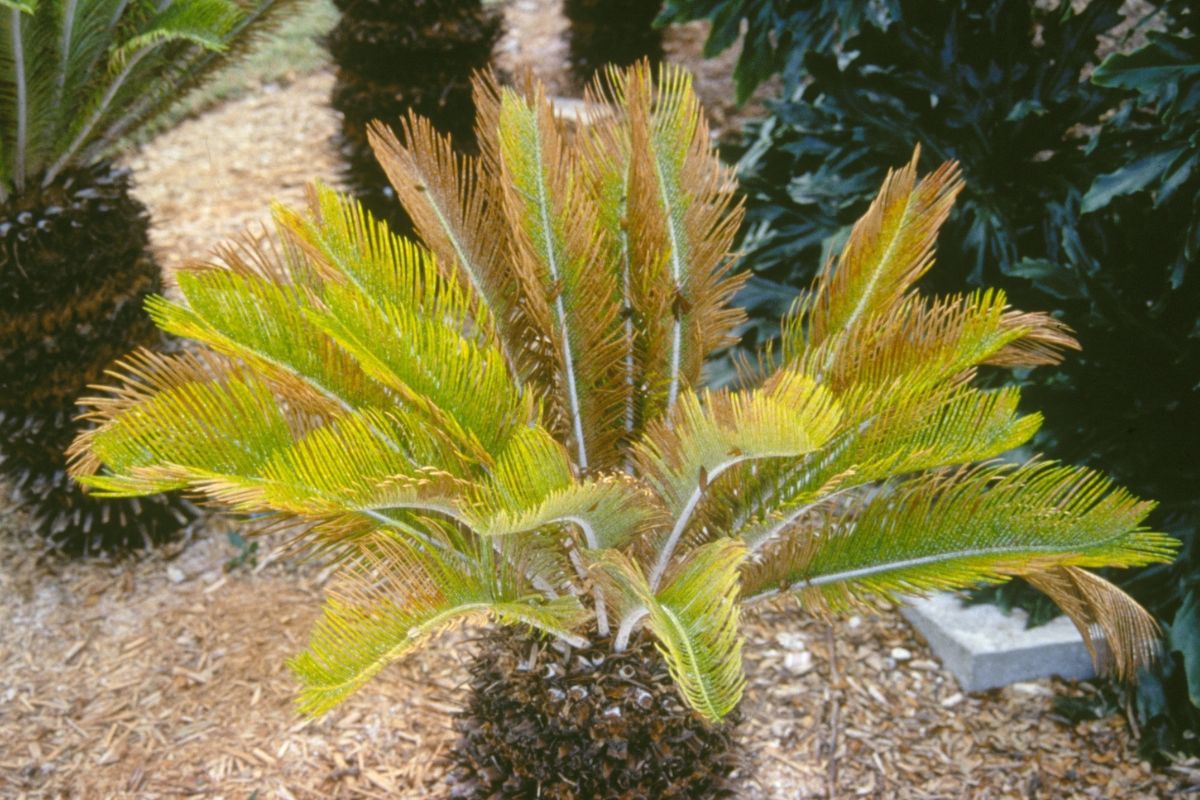
Yellowed small palm with cycad aulacaspis scale. Image courtesy of Florida Division of Plant Industry, Florida Department of Agriculture and Consumer Services, Bugwood.org.
How does Cycad Aulacaspis Scale Harm Palms?
While one scale insect won’t do a lot of damage, the problem is the sheer quantity of CAS and how quickly they can reproduce.
Each female cycad aulacaspis scale can lay over 100 eggs in its lifetime, and an egg develops into an adult in as quickly as 28 days. It is not uncommon to find scale insects completely covering palm fronds as they mate, reproduce, and feed on the palm.
While in its native area, cycad aulacaspis scale can be controlled by predators, those predators are not found in South Florida. Some native predators of CAS were released in South Florida in 1997 and 1998, but they have not eradicated the pest.
How Can You Recognize Cycad Aulacaspis Scale on Your Palms?
One of the first signs of cycad aulacaspis scale infestation includes small yellow spots on the palm fronds. As the scale insects continue to dry out the fronds, they become dry and brown.
While cycad aulacaspis scale begins on the underside of fronds, they are usually not spotted until the infestation has become heavy and moves to the rest of the palm.
Infestations can be on any part of the palm, including the fronds, cones, seeds, and even underground roots (as deep as 24 inches below the surface). Most newly hatched crawlers will first infest the trunk and the base of the palm fronds.
A highly infested palm can be almost completely covered in cycad aulacaspis scale, which leads to the appearance of the palm being “snow-covered.”
Think your palm may be suffering from another issue? Check out our article on palm problems.
Can you Stop a Cycad Aulacaspis Scale Infestation?
If spotted early enough, cycad aulacaspis scale can be treated, though it is a tough pest to eradicate.
Contact Sherlock Tree for a consultation and to begin treatments (such as horticultural oils or systemic insecticides) as soon as possible.
Learn more about insect and disease management >>
You may also want to remove any heavily infested fronds and/or spray the palm with a strong spray with a garden hose.
This pest can damage your palms in a matter of weeks, so check your palms often, schedule inspections frequently, and act quickly if you spot any signs of cycad aulacaspis scale to save your palms.
Call Sherlock for quality tree services
Whether you're looking for specific tree care services, such as palm trimming, tree removal, or disease treatments, or would like one of our Arborists to examine your trees to identify any issues and recommend options, we're always here for you! Just give us a call at 954-788-4000 to set up an appointment.
SEE MORE ARTICLES
Looking for more?
We've got you covered with a monthly newsletter full of tips, resources, updates, how-to's, and other helpful information about trees and landscapes in South Florida!

